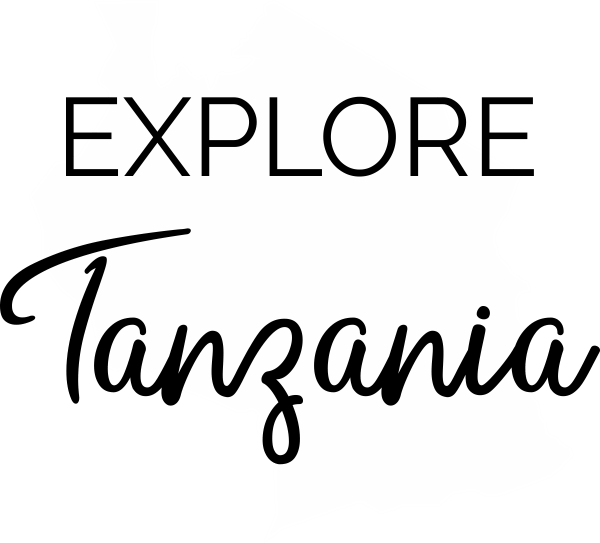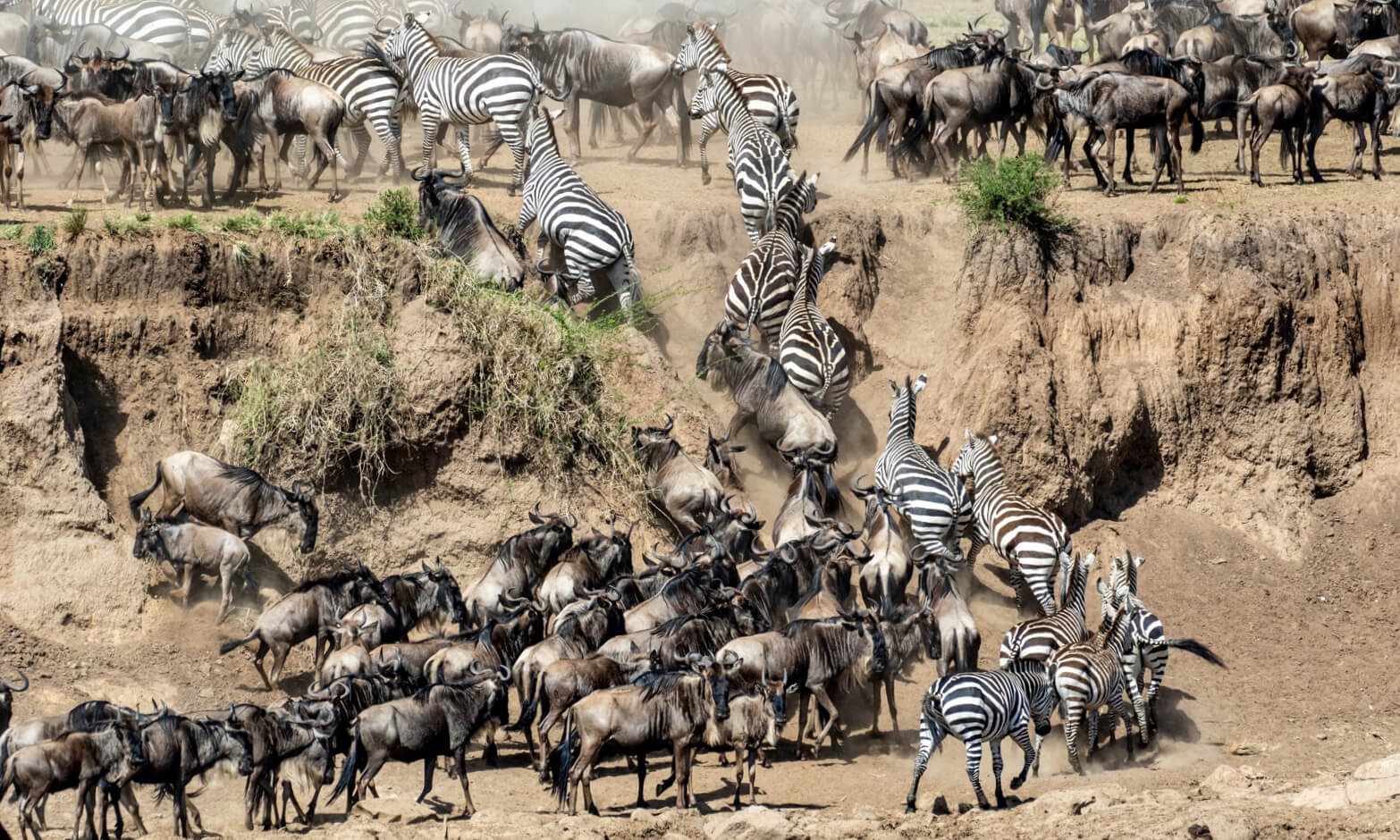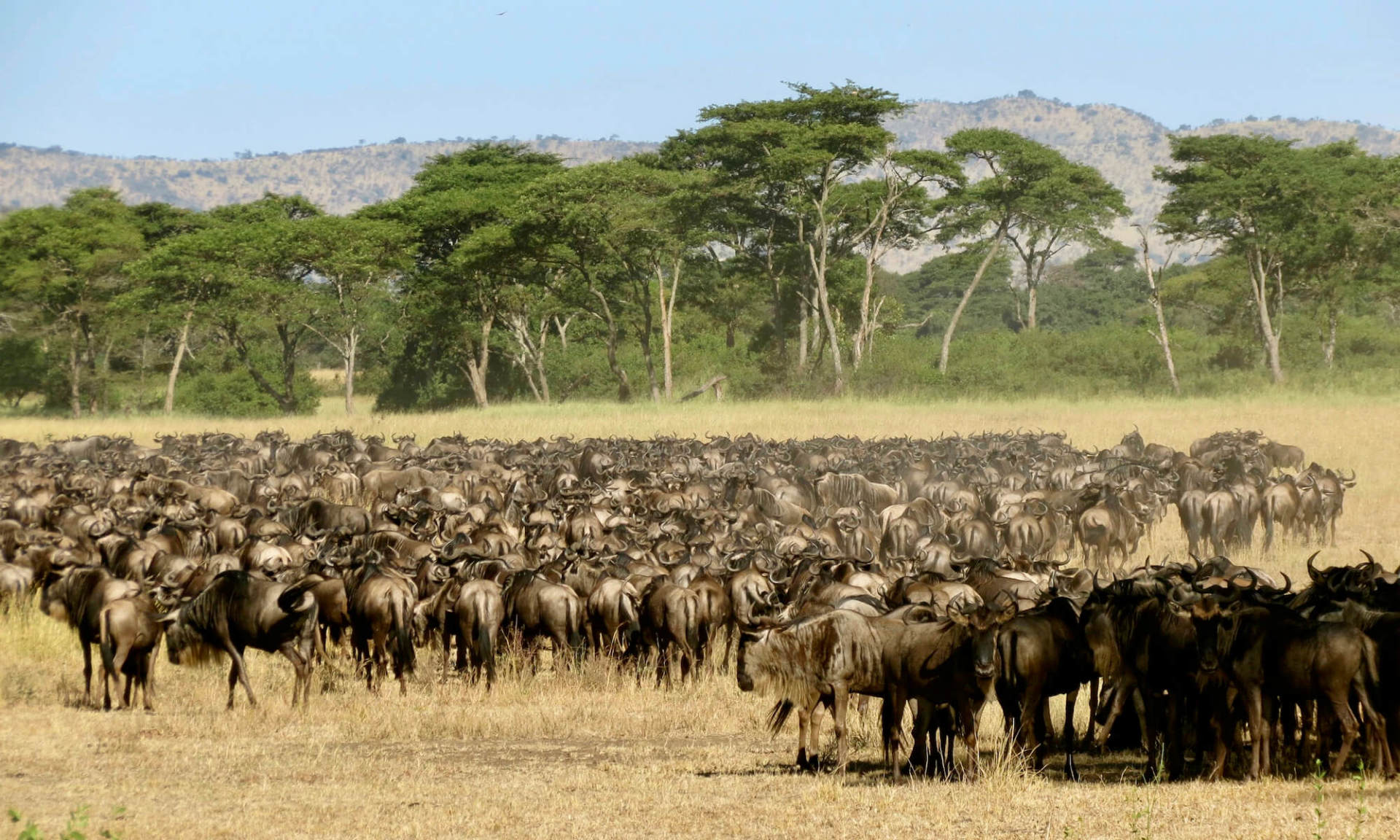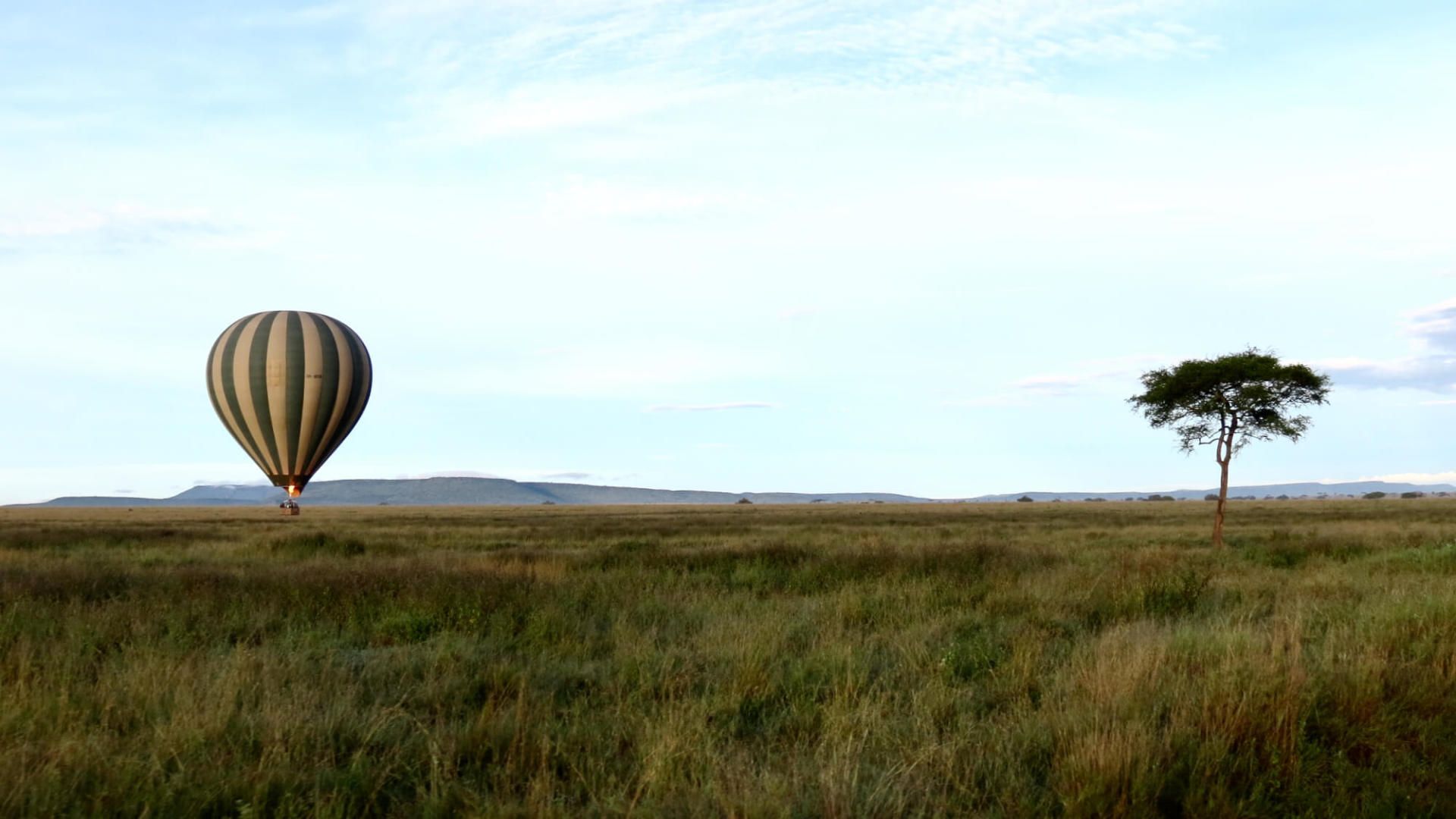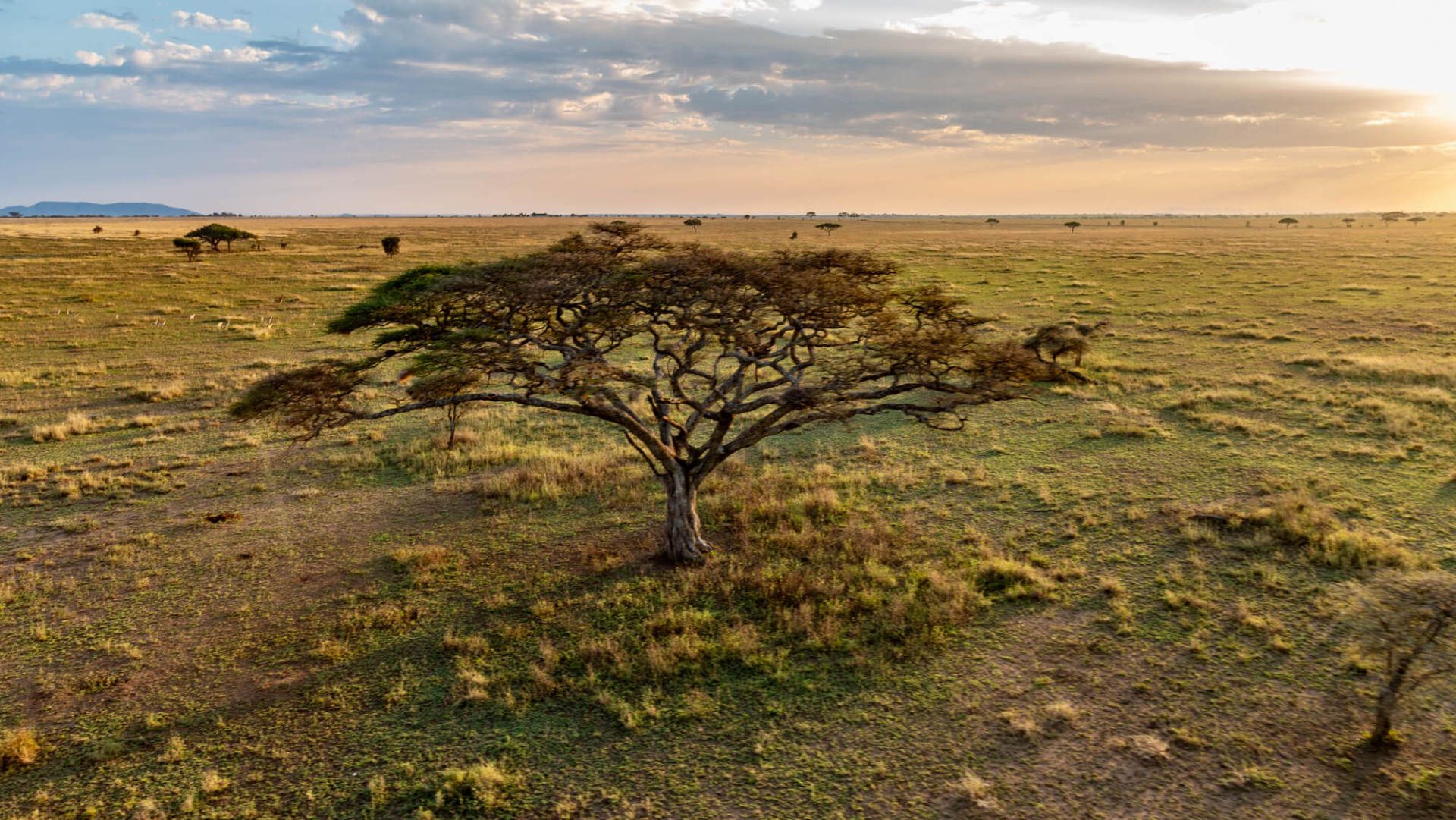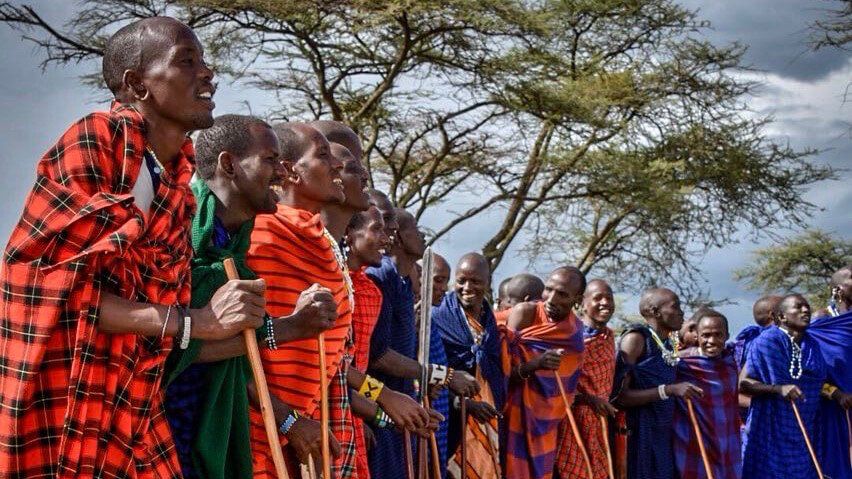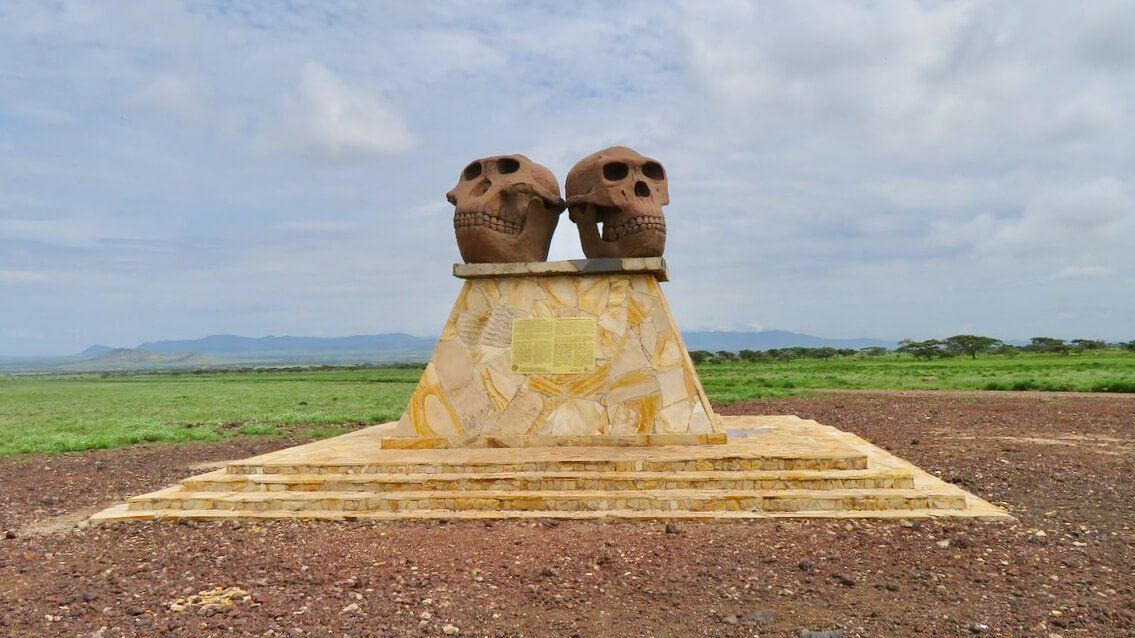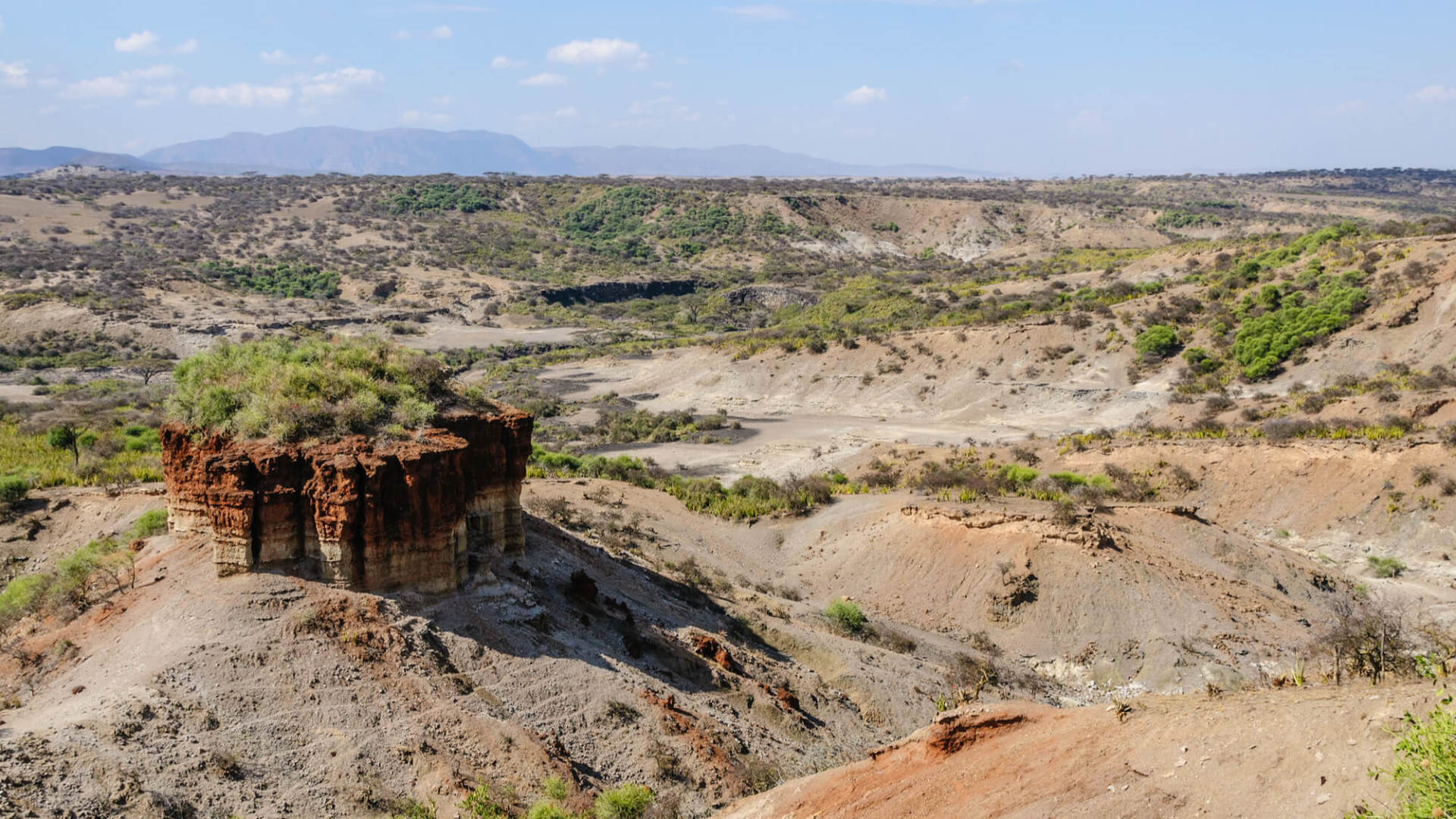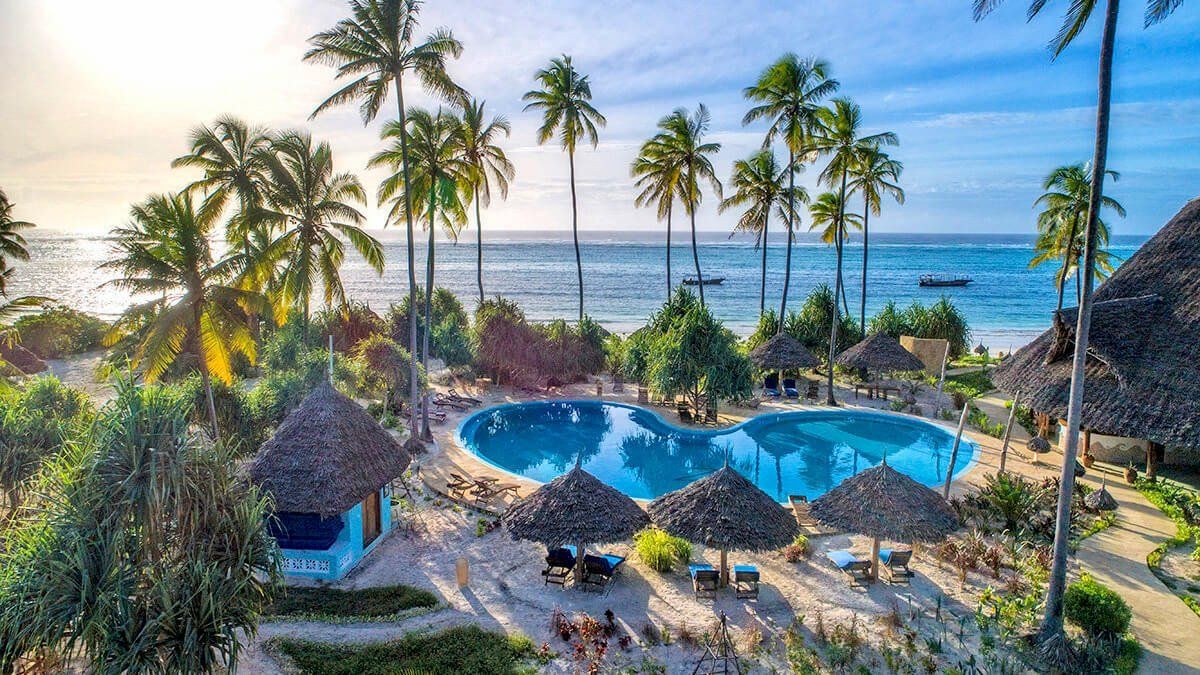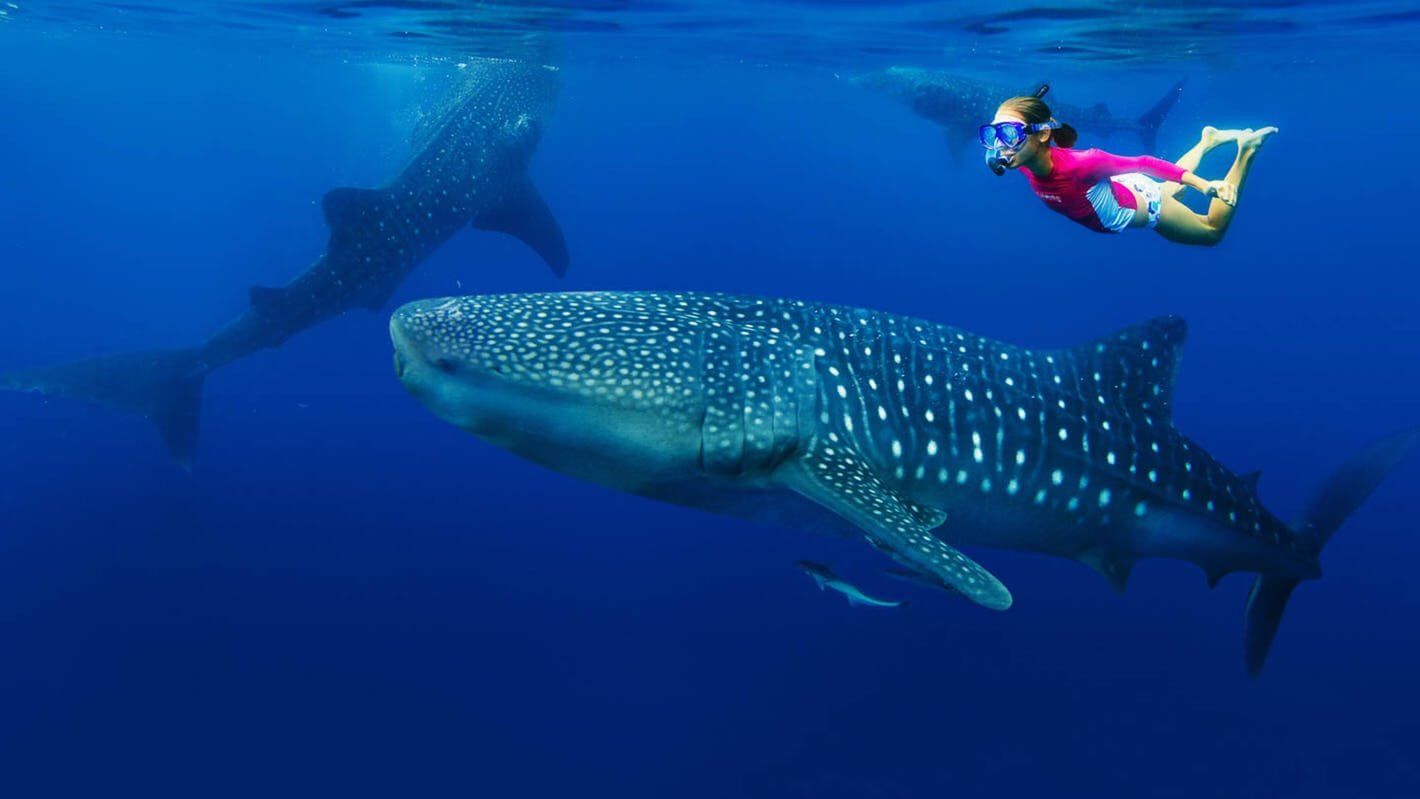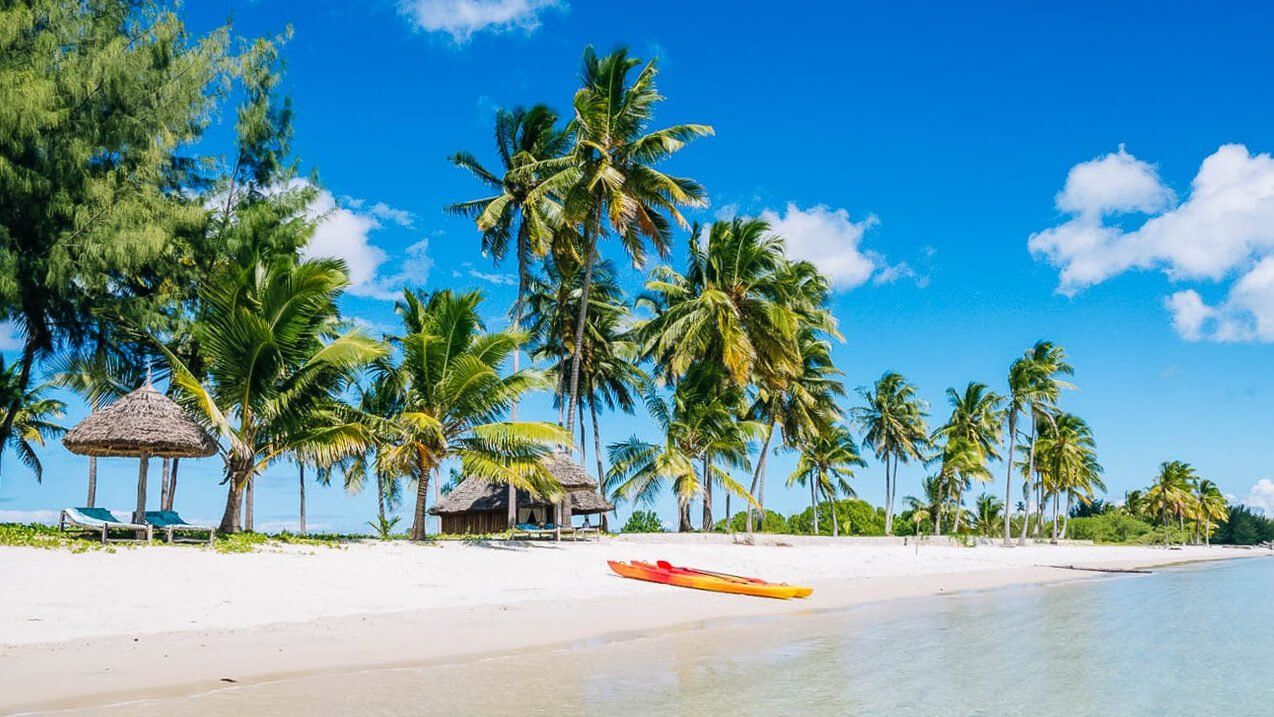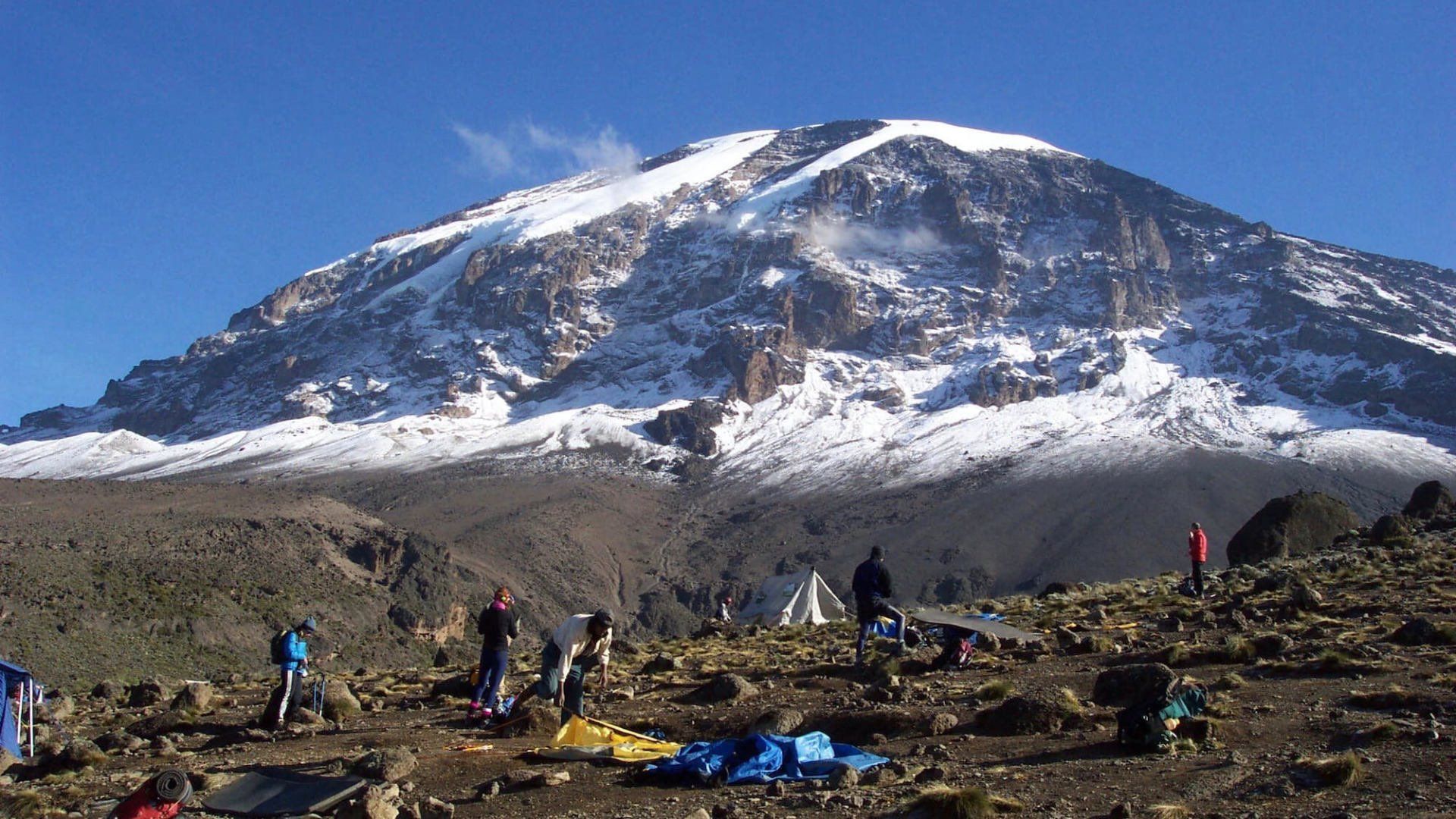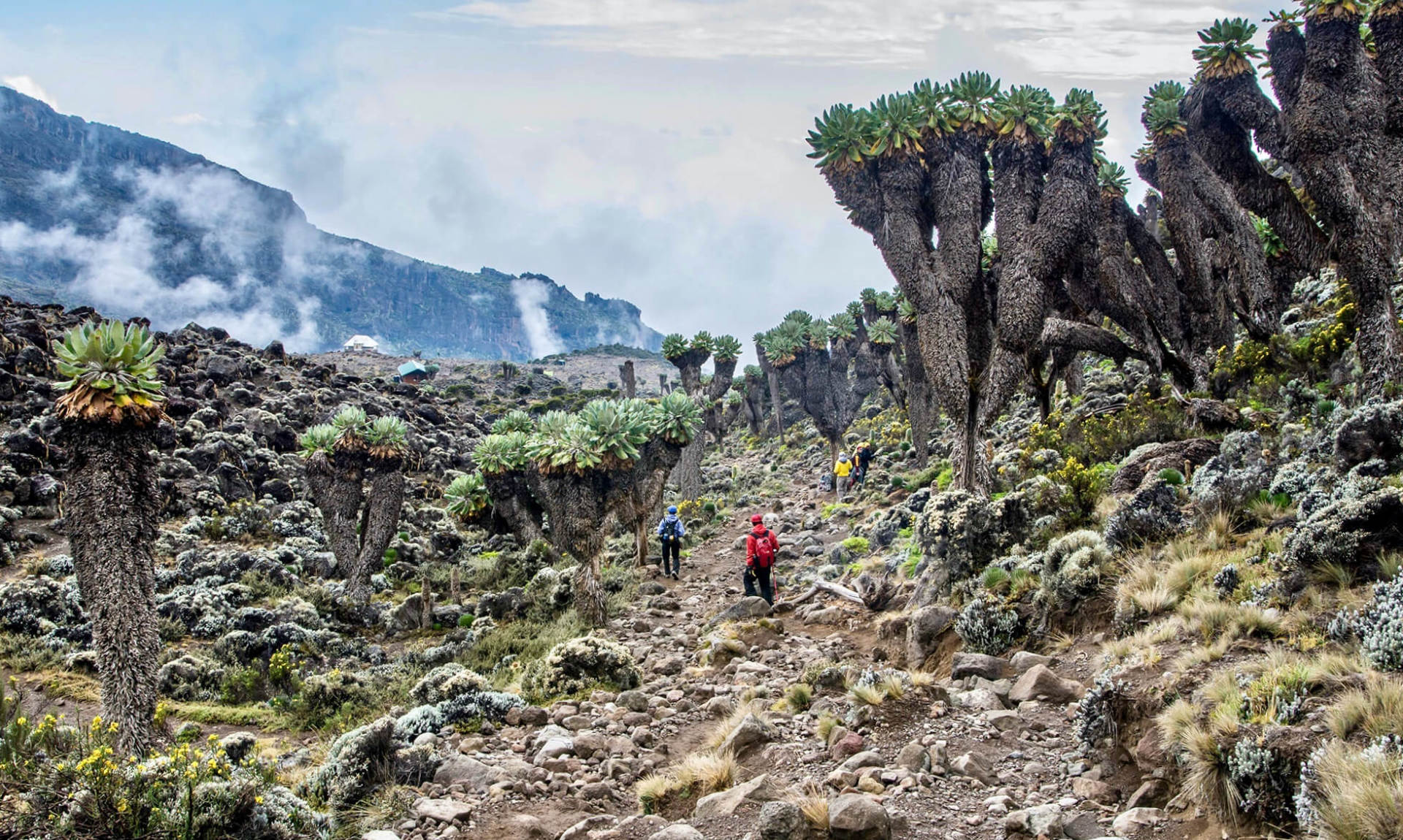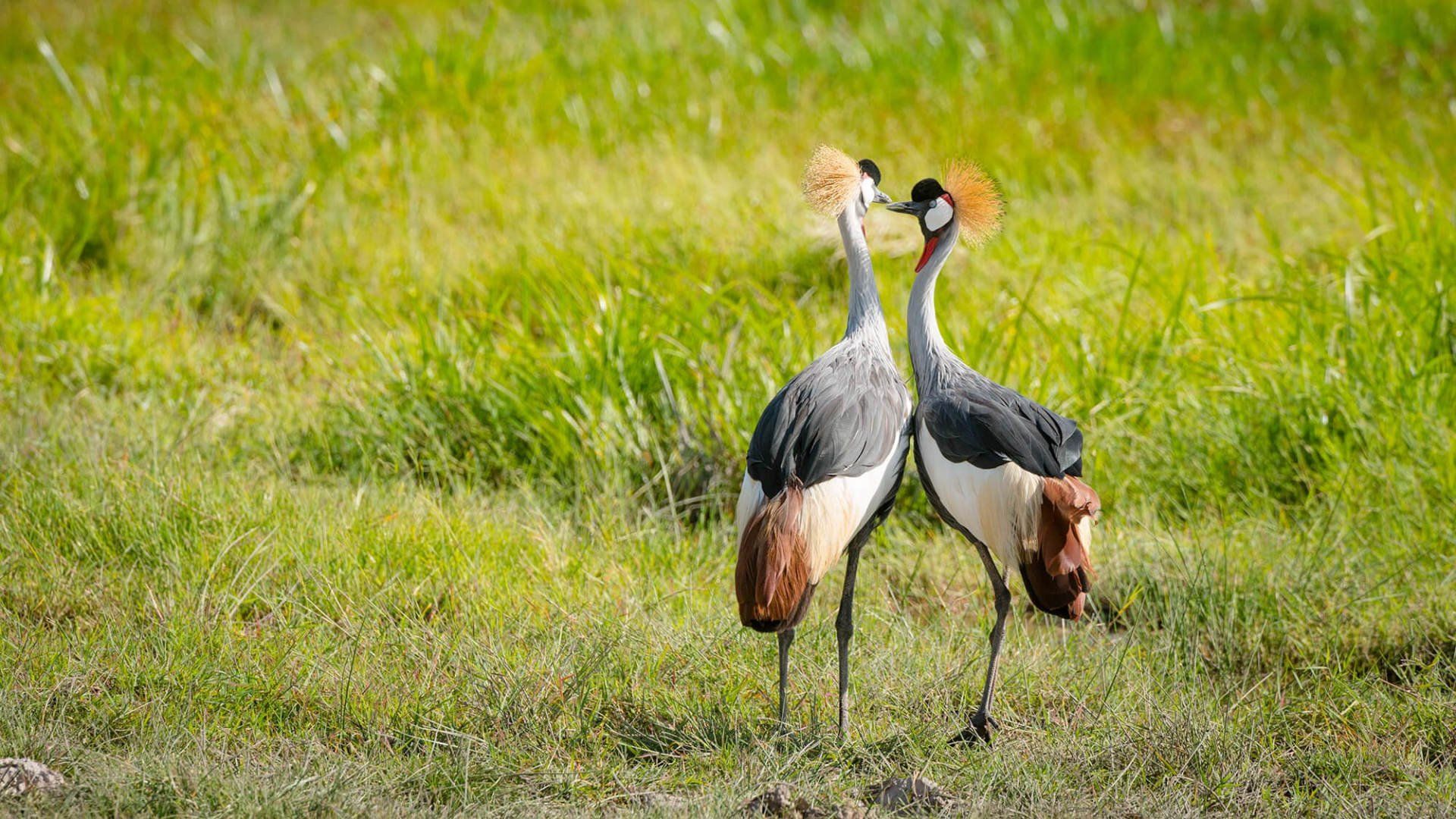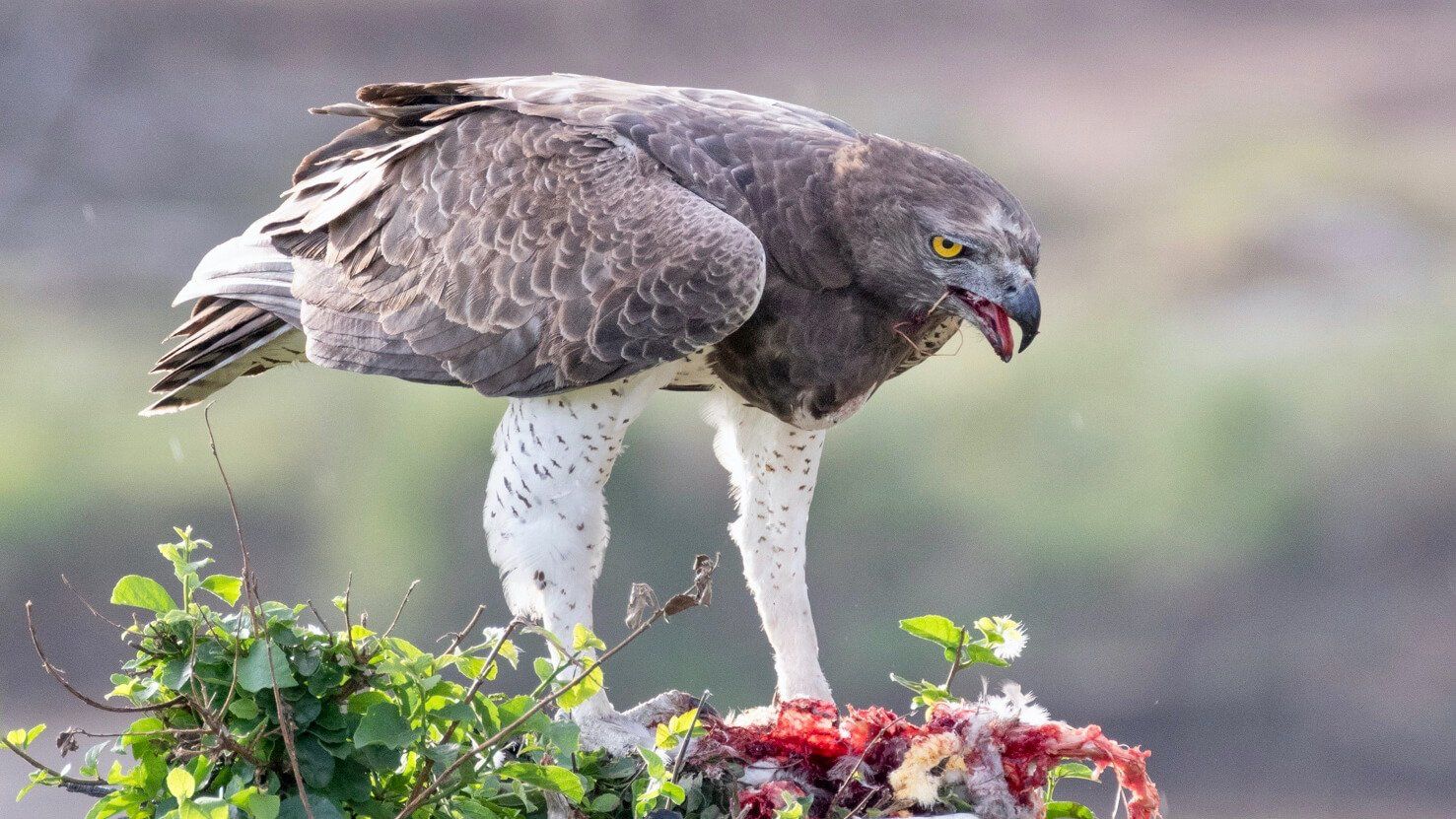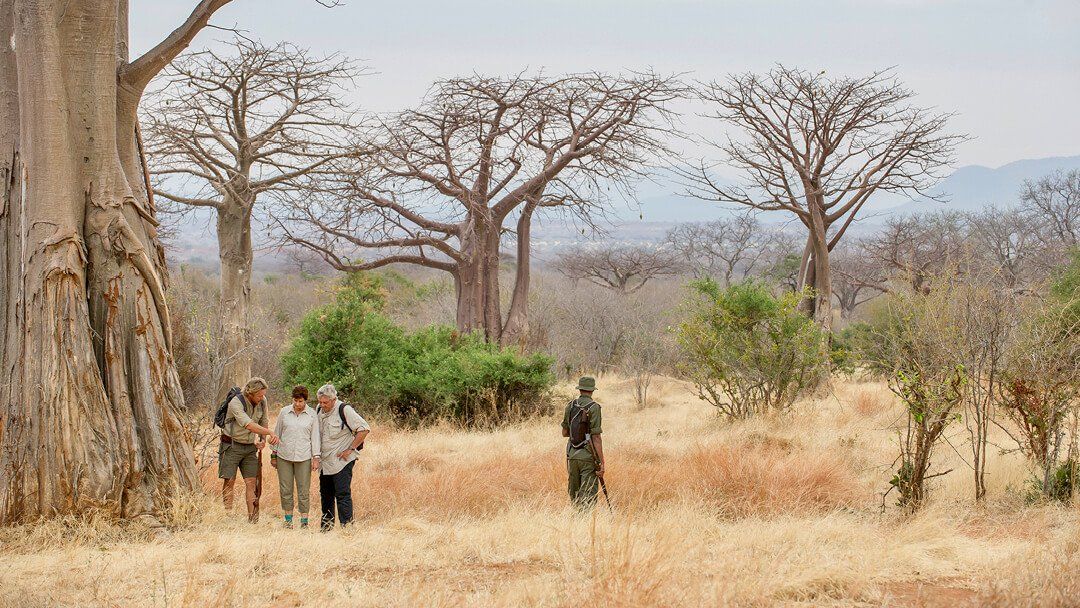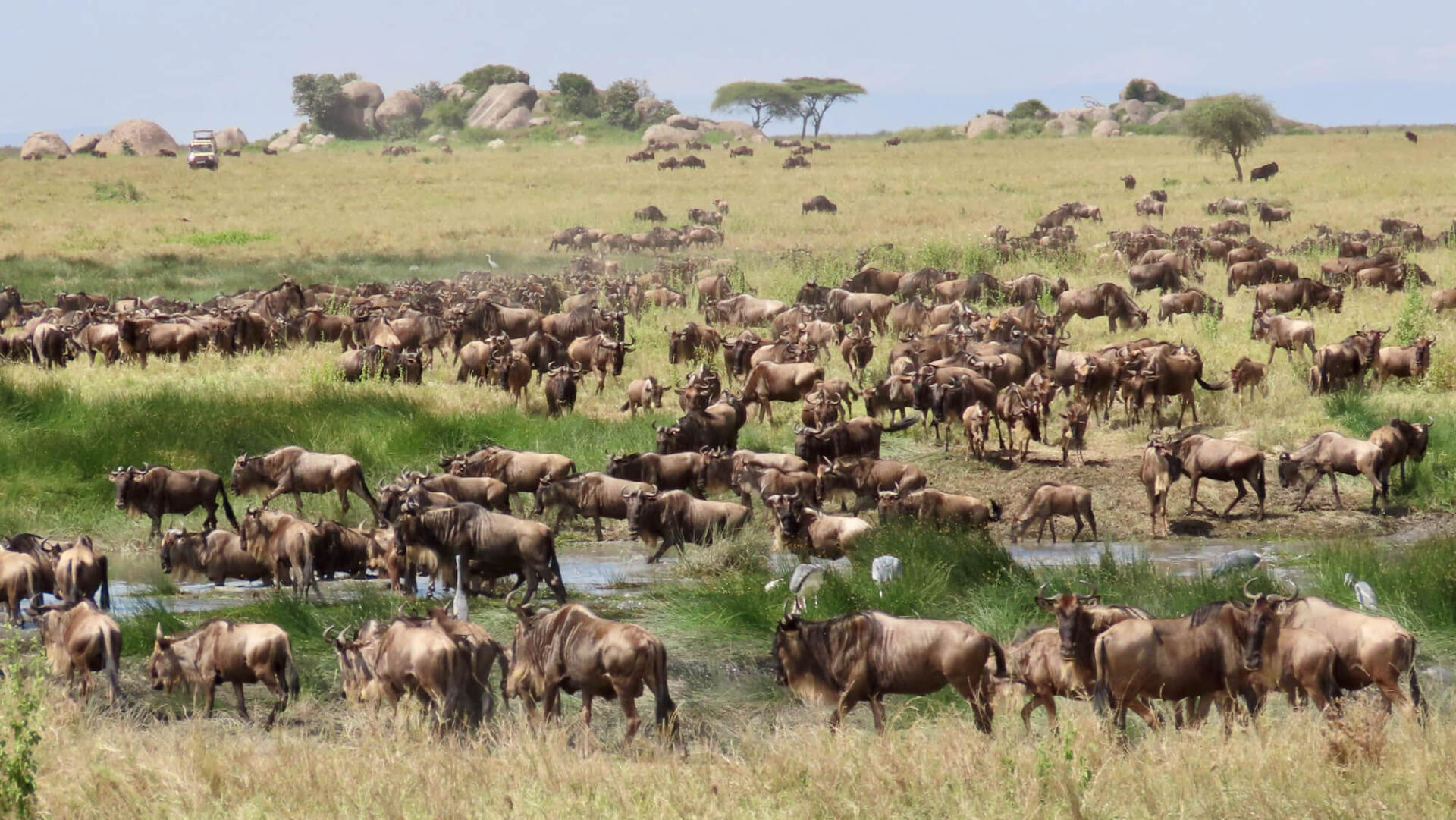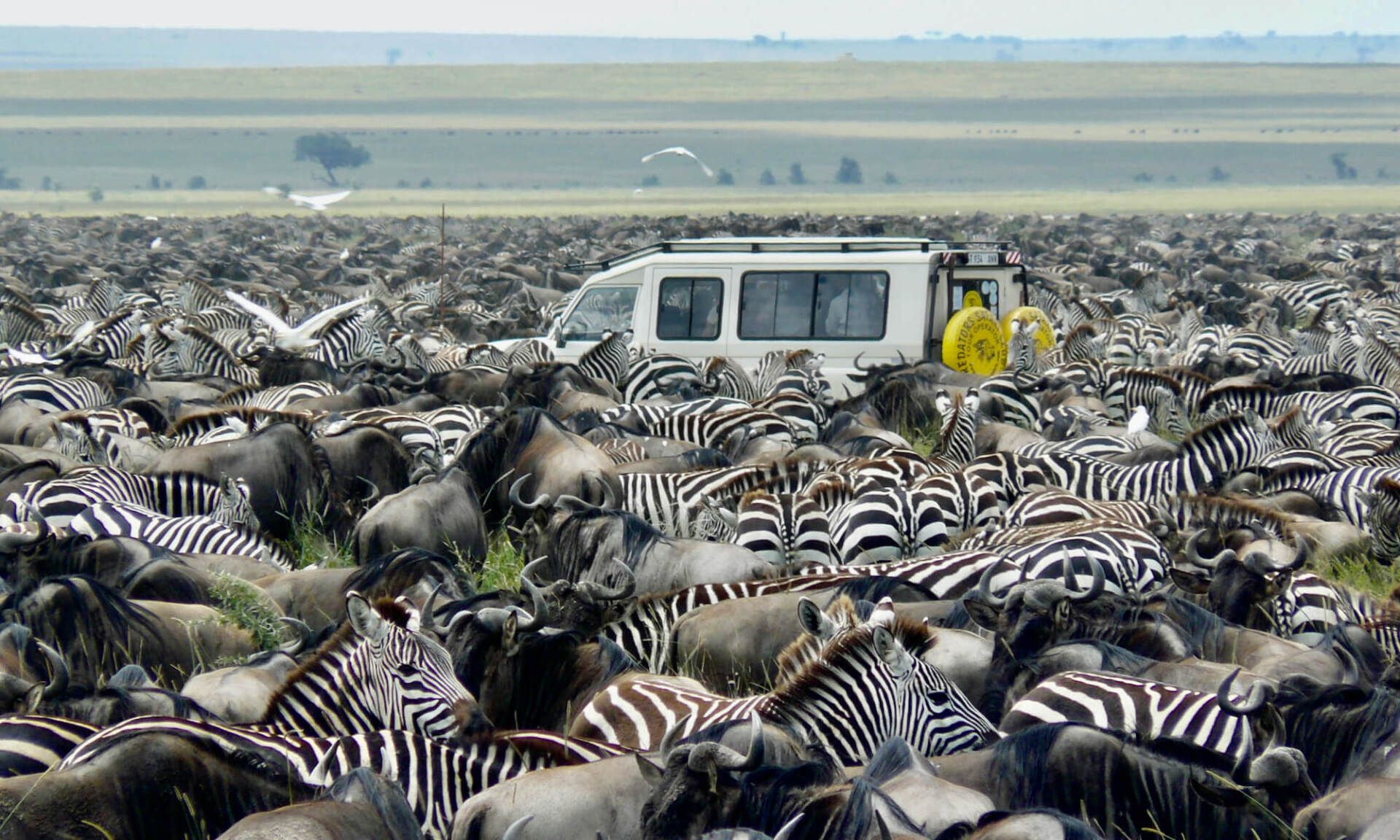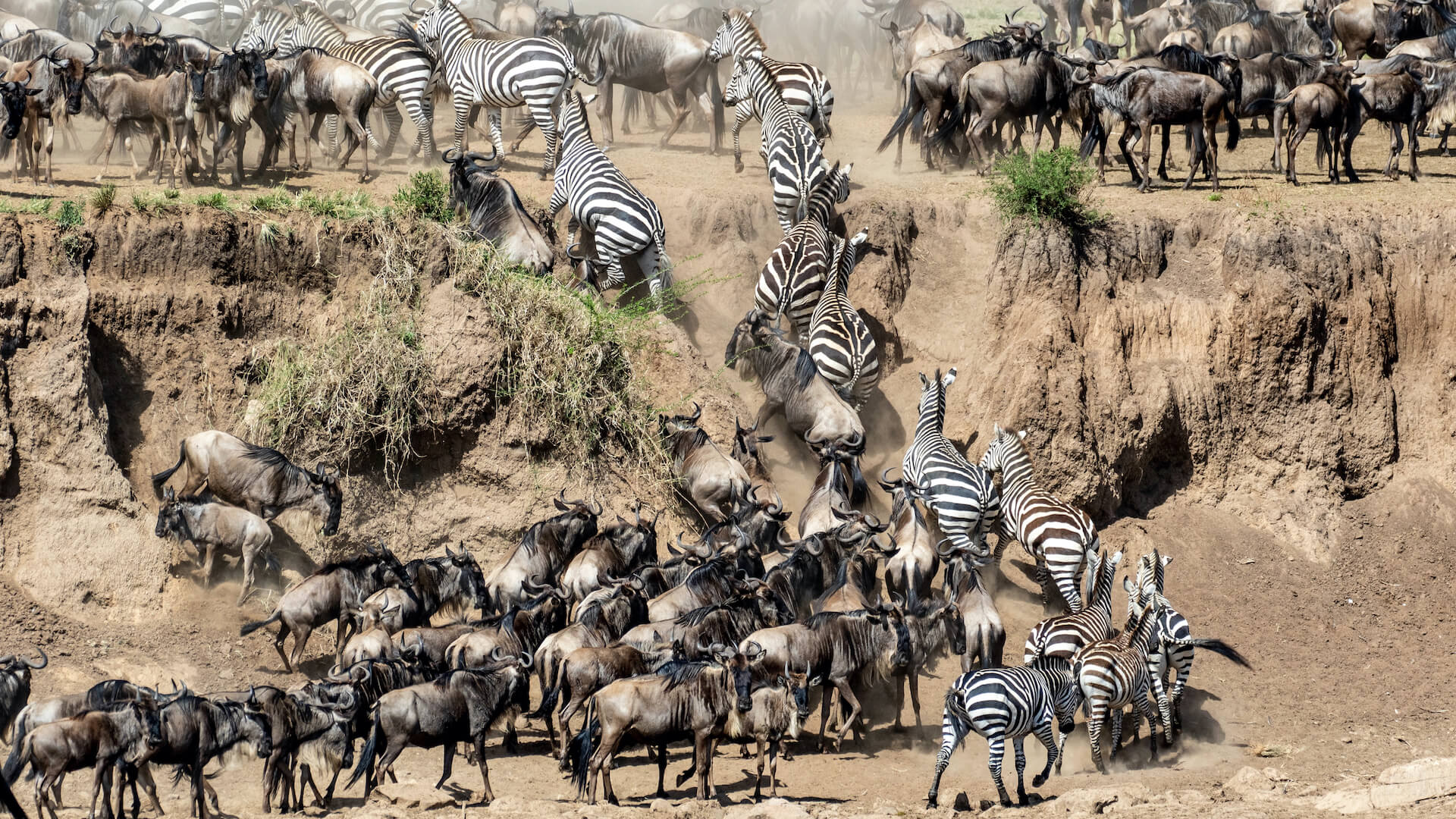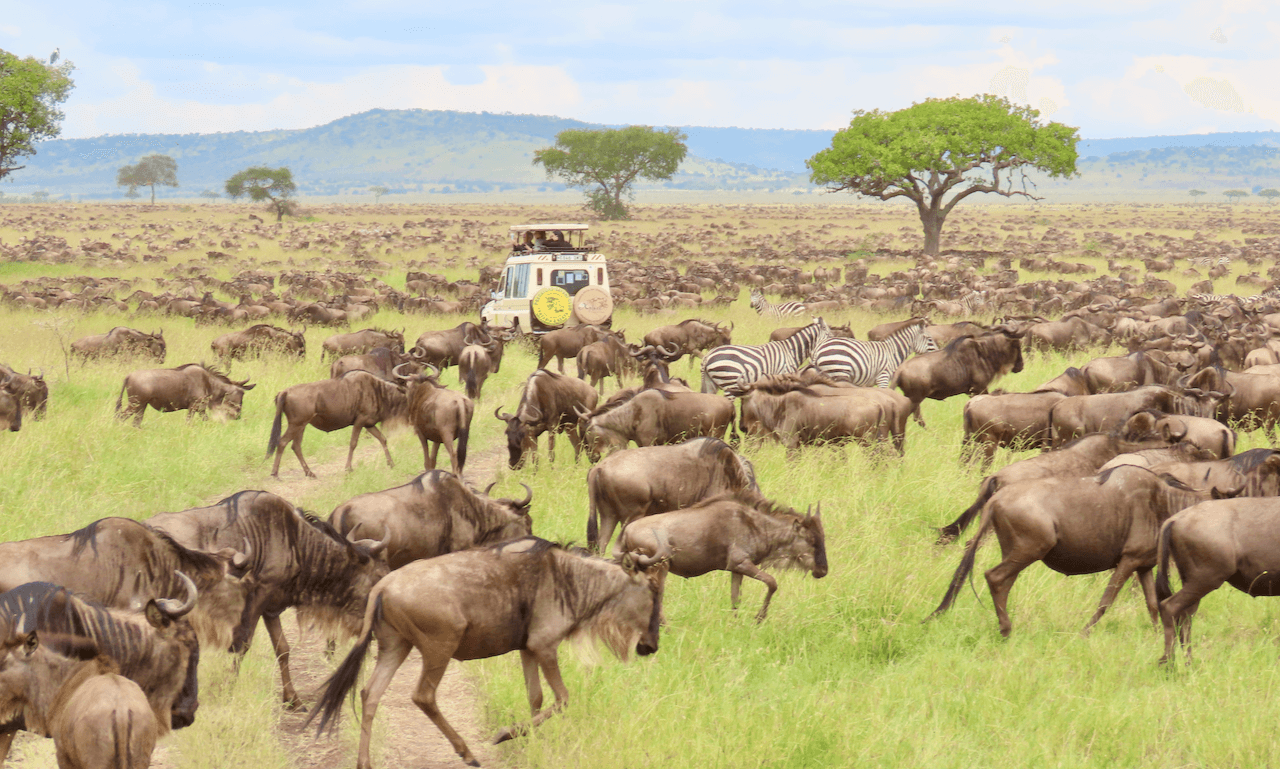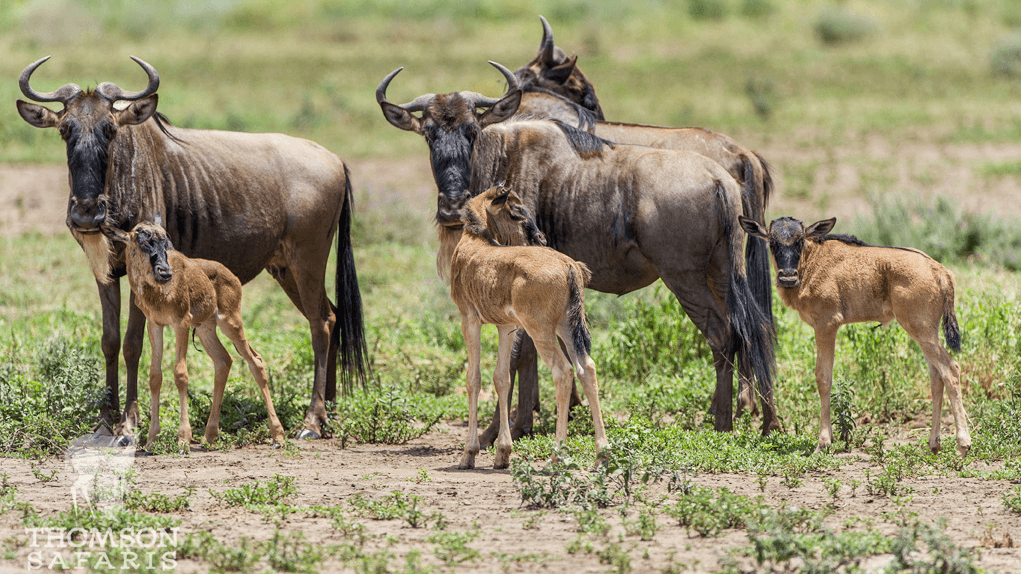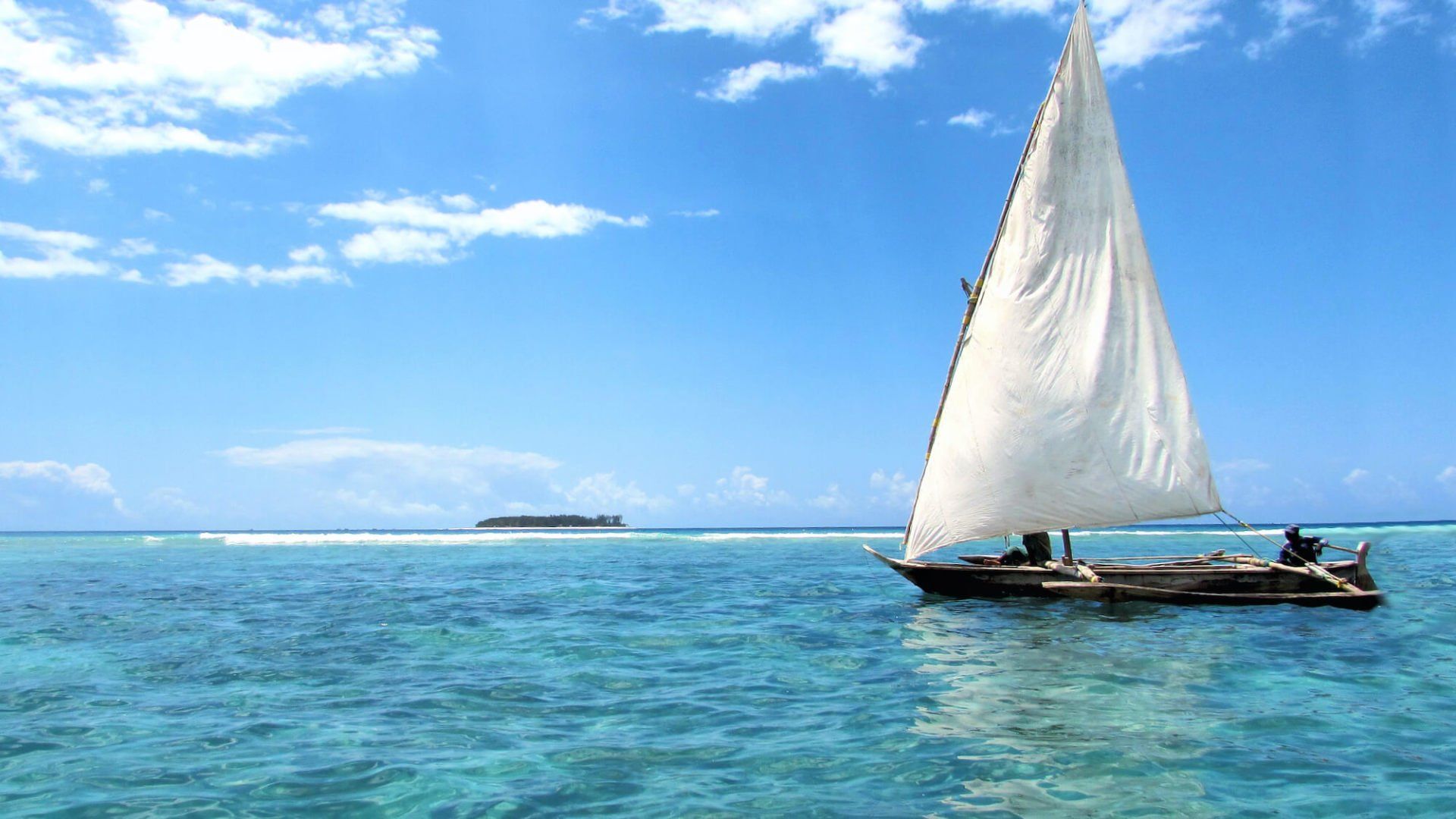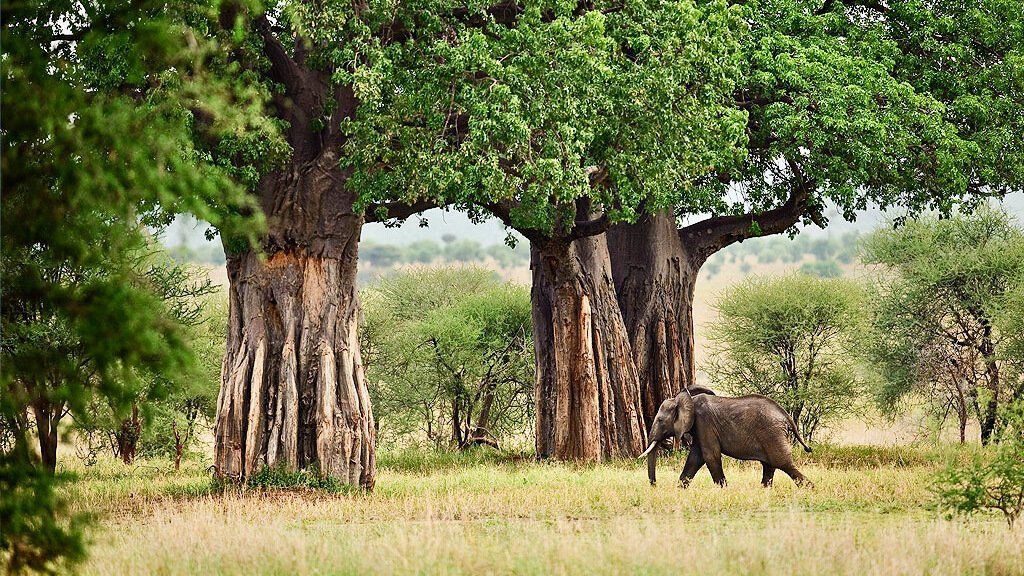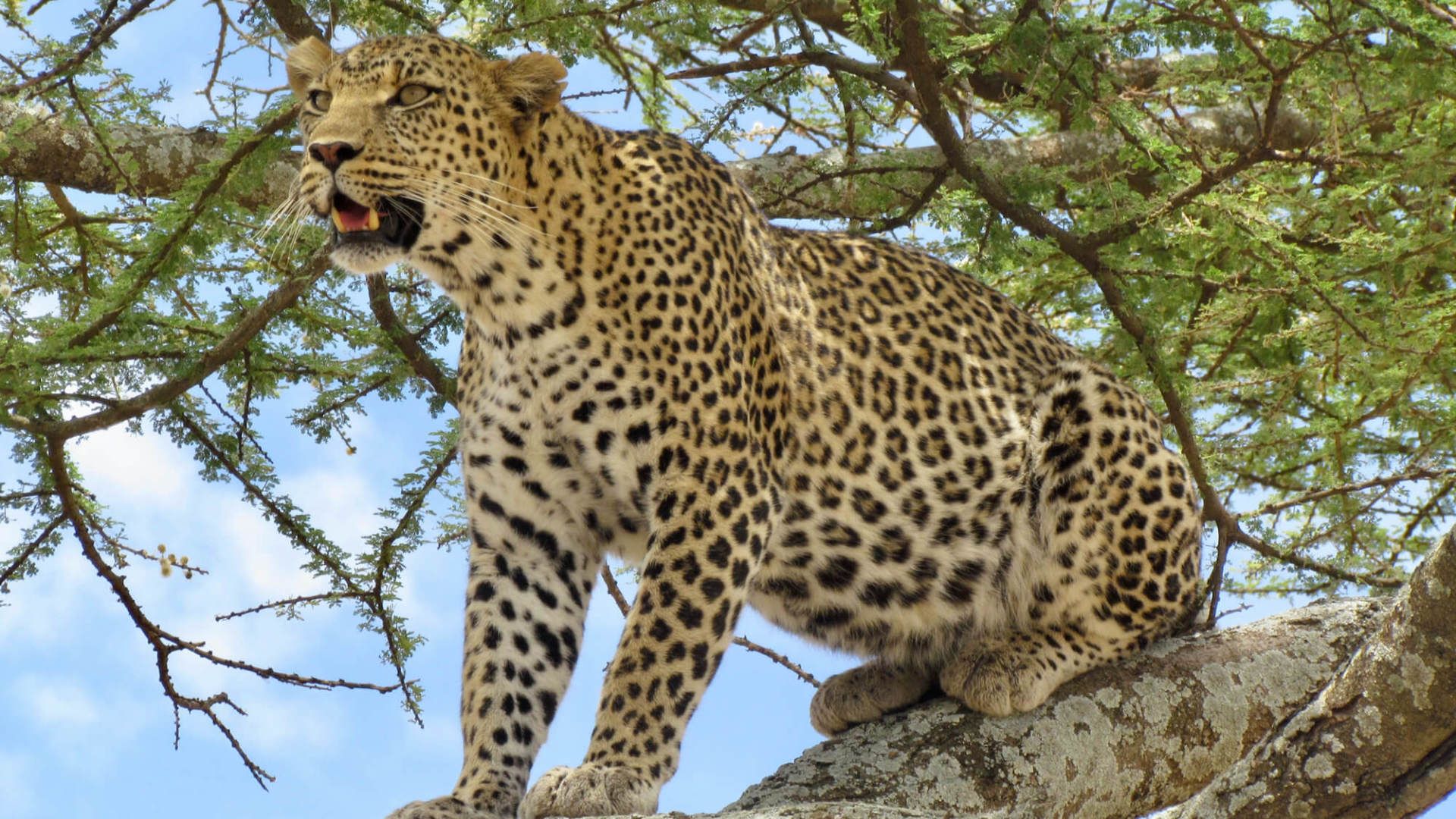Tanzania Attractions & Highlights
-
Wildebeest Migration
The Wildebeest Migration, also called the Great Migration, is one of the most exciting natural wonders of the world and one of the most renown Tanzania tourist attrations.
It is an ever-moving cycle of vast numbers of wildebeests accompanied by large numbers of zebras and gazelles searching for food and water between the Serengeti in Tanzania and the Masai Mara in Kenya.
The herds move in a clockwise circle and cover around 2,000 kilometres from the southern expanse of the Serengeti and the Ngorongoro Conservation Area over the border of Kenya to the Maasai Mara, back down to the south of the Serengeti in search of food and water. During this time, they will give birth, brave crocodile-infested waters and fend off hungry predators like lions, cheetahs and leopards.
It is the world's largest and furthest migration of land mammals and this natural phenomenon is listed as one of the Seven Natural Wonders of Africa, and one of the main attractions in Tanzania.
Best time to see the migration in the Serengeti?
The migration takes place throughout the year and YES; you can see the migration 12-months of the year in the Serengeti. It generally follows a relatively predictable path as the wildebeests seek fresh grazing and water. The precise timing of the wildebeest migration is entirely dependent upon the rainfall patterns.
The wildebeest migration cycle:
Herewith a very general breakdown of more or less where the herds are during the year, bearing in mind that the entire migration is triggered by rain, which can be early, late or “on time”.
- Southern Serengeti and Ngorongoro Conservation Area - December to April
- Central Serengeti - April and May
- Western Serengeti and Lobo Valley - June and July
- Northern Serengeti and Masai Mara - July to October
- Migration return to the South - October to December
- Hot Air Balloon Safari - Serengeti
A bird's-eye view over the Serengeti plains is definitely the best way to experience the true magnitude of the park. The higher you are, the greater the view of these magnificent plains. Drifting through the skies as you gaze over the edge of the basket, you can feast your eyes on the spectacular landscape below while enjoying one of the most beautiful balloon rides on earth.
You will be collected around 04h30, allowing for a quick night game drive en route to the launch site. The pilot will give you a briefing before inflating and launching the balloon. The hot air balloons lift off just before sunrise when the breeze on the plains is still cool. Once airborne, the prevailing wind blows the balloons across the vast landscape. Apart from the hiss of the burners, the flight above the Serengeti plains is mysteriously silent. The pilot controls the height by regulating the flow of hot air into the balloon. Sometimes the balloon will descend over the plains for a close-up view of the wildlife. Other times, it rises to clear a tree canopy, offering a unique perspective over the majestic Serengeti presenting many great photo opportunities. The duration of the flight is roughly one hour, depending on the wind conditions.
On your return, you will be treated to a special bush breakfast laid out with the finest tableware. Stewards in traditional Swahili attire will serve fresh tropical fruits, warm freshly baked bread and a traditional English breakfast of bacon, sausages, eggs, mushrooms and tomatoes. Enjoy a complimentary glass of sparkling wine or non-alcoholic beverage to celebrate your incredible adventure.
At approximately 09h30 you will be taken to the pre-organised drop off point to continue your safari adventure.
Balloon safaris are offered in the following areas:
Central Serengeti - Flights all year-round
Ngorongoro Conservation Area (Ndutu) - Seasonal flights from December to March
Western Serengeti - Seasonal flights from June to October
North Serengeti - Seasonal flights from July to October
Grumeti Reserve - Private charters only
* No children under the age of seven.
- Maasai Village Visit
The Maasai tribe is a fascinating group of people living in the Ngorongoro Conservation Area. You can visit the Maasai Cultural bomas to learn more about their unique culture, take photographs or buy souvenirs. Standing proud in the savannah with their red blankets and painted shields, the Maasai people have become widely known symbols of East Africa.
The most recognizable piece of clothing worn by the Maasai is the shùkà, a sheet of fabric wrapped around the body. The colour of Maasai attire varies according to the person’s age and gender. After their circumcision, young men will wear black for several months. Older men usually wear red wraparounds, whereas women typically opt for blue cloth.
The Maasai tribe live in small traditional house or huts, surrounded by thorn bush fences to protect the tribe and their animals against enemies like various predators. The huts are built using branches, twigs and grass covered with a mixture of cow dung and mud. Inside they use animal skins and cushions made of grass.
The Maasai’s preferred diet is the milk and blood from their cattle.
Both Masaai man and woman pierce and stretch their earlobes and insert large metal hoops into it. It is a sign of beauty for women to have long stretched earlobes and decorative cuts on their faces.
The Maasai are known for their jumping form of dance, which is traditionally carried out by warriors. It is called the “adumu”, a highly recognisable ritual of Maasai life. They don’t use drums to keep the rhythm but skilfully utilise their voices as instruments. The young men form a semicircle and then two of them will do straight up jumps in the centre, aiming to go higher with each jump without letting their heels touch the ground. As each one jumps, the others sing a high-pitched song whose tone depends on the height of the jump.
The woman will gather with a leader, known as the “Olaranyani”, who leads by singing the first line of a song. The group will respond with one unanimous call in acknowledgement. Singing is accompanied by body movements and tilting the head back and forth.
The Maasai language called “Maa” is a spoken language and generally not written.
- Olduvai Gorge
Olduvai Gorge (also known as Oldupai Gorge) is located between the Ngorongoro Crater and the Serengeti. It is an important historical site containing evidence of the earliest evolutionary remains of humans walking on two feet and using tools. The Gorge is 48 km long, about 90 meters deep and forms part of a World Heritage Site.
Louis and Mary Leakey made some remarkable discoveries at Olduvai Gorge in 1959. They found the first Proconsul skull, one of the earliest hominoids known as well as hominid footprints in Laetoli thought to be 3.6 million years old. They also unearthed the “Zinjanthropus skull,” one of the most famous fossils.
Archaeologists still chip away hoping to find more remnants of fossils from a by-gone era. Guides at the gorge can take you on a tour of the area and explain the history and importance of Olduvai Gorge while the small museum provides further evidence and explanatory features for you to browse through.
- Zanzibar Island
Known as “Spice Island”, the beautiful island of Zanzibar is bursting with culture and history, seemingly at odds with its idyllic white-sand beaches with palms swaying lazily in the sea breeze. This combination makes Zanzibar a fabulous place to explore as well as a dream destination to relax and unwind in. Located just 40 kilometres off the coast of Tanzania, Zanzibar Island is locally referred to as “Unguja”.
Enjoy miles of unspoilt white sand beaches and the warm waters of the Indian Ocean. Zanzibar offers a multitude of beach resorts and lodges for those looking for a pre- or post-safari break, whether it's for some rest and relaxation on the beach or to explore the vibrant reefs and marine life under the waves.
Beach areas differ according to its location on the island:
- On the East coast at low tide, it forms a wide band of white that runs out to the seaweed farms and finally, to the deep-water channel and the barrier reef. At high tide, the waves come right up to the edge of the palm-covered land.
- Up North, azure waters and white sands awaits you. There is no real difference between the high and low tide.
- The West coast offers small beach areas with beautiful sunsets!
No matter what beach you choose, you will experience that laid-back island rhythm that is the spirit of Zanzibar!
The old part of the town, known as Stone Town, is composed of a network of shady, winding, narrow alleys between old stone buildings with ornately decorated entrances and balconies. Numerous tiny shops sell everything under the sun. You will find several hotels, the former Sultan's Palace (House of Wonder), the old fort and restaurants along the seafront. Marvel at the Arabic architecture in Stone Town and the exotic spice markets.
Recommended day trip:
- Spice tour - Walk through the spice farm with your guide. Touch, smell and taste different spices and tropical fruits.
- Stone Town tour - Explore the markets and places like the slave market, Anglican Cathedral, the House of Wonders, the Sultans' Palace Museum, the Old Arab Fort and the dispensary.
- Safari blue snorkel trip - Full day excursion on a traditional sailing dhow. Explore Menai Bay, an official conservation area. Home to beautiful uninhabited islands, the area is stunning and frequented by humpback and bottlenose dolphins.
- Kizimkazi boat trip - Board a dhow and set sail on the Indian Ocean where you can get as close to 10 meters from the dolphins. Kizimkazi is home to large numbers of bottle-nosed and spinner dolphins, beautiful coral reefs and tropical fish.
- Scuba diving - A must for any diver!
Other islands in the Zanzibar Archipelago - Mafia, Pemba and Mnemba, are still untainted, offering you the chance to experience an exotic, relaxing and unforgettable Indian Ocean island holiday.
- Whale Watching – Mafia Island
Africa offers some of the most exceptional whale watching opportunities in the world. There is a variety of destinations offering excellent seasonal sightings and the chance to come close to these gentle giants - Tanzania is a great place for whale watching. Humpback whales pass through these waters south of Mafia Island from July to November as they take their calves to warmer water.
These magical creatures can grow up to 14 metres long and weigh a whopping 40 tonnes! At close range, humpback whales are easily distinguished from any other giant whales by their remarkably long flippers, which are approximately one-third the length of the body.
It is breathtaking to watch them breach, throwing themselves out of the water and landing with a tremendous splash. They also playfully slap their fins and tails, putting on a superb show.
In recent years, many humpback whales around Mafia Island have often approached boats for “friendly” encounters. During the whale season, it may be possible to see them during organised whale watching trips in Chole Bay and around the coast of Mafia Island.
What you can experience during a whale watching trip:
Breaching: It usually happens when the seas are rough and the whales need to breathe above water. It involves them jumping out of the water and falling back with a huge splash.
Blowing: Whales breach the surface to forcefully exhale air through their blowhole positioned on the top of their head, before closing the flap of skin that covers the blowhole.
Fluking: A whale's tail is called its flukes and they move it up and down to propel through the water.
Lobtailing: Flapping the tail/flukes on the water, creating a loud sound which can be heard from afar.
-
Climbing Kilimanjaro
Looking to experience intense adventure? Take it a step higher and call it “Kilimanjaro”!
The Kilimanjaro climb takes you through five different ecosystems and climbing 5,895 meters to the top is one of the most empowering adventures you can have without serious training. With 23 years experience of sending clients up Kilimanjaro and with several personal summits, we would love to share our knowledge and help you prepare for your climb.
Mount Kilimanjaro deserves to be on every traveller’s bucket list! No other mountain offers such a wealth of wow-factors! You will see a rainforest, moorlands, alpine desert, subalpine plants (like everlasting flowers and giant groundsels - known as Senecio trees) and glaciers. From day 2, you are already above the clouds and looking onto magnificent scenery. Your climb ends standing on the Roof of Africa, an experience you will cherish for rest of your life.
The eXplore Plus Travel & Tours team love hiking high altitude mountains in Africa and we can't wait to share our knowledge with you. We have climbed the five highest summits in Africa (Kilimanjaro, Mount Kenya, Rwenzori's, Mount Meru and Simien Mountains). There are few things more rewarding than reaching the summit of a high-altitude mountain! The views and sense of accomplishment create memories that will stay with you for the rest of your life. But this achievement occurs because you've done the hard work, chosen the right climbing equipment, trained, and executed the climb successfully. We can't wait to help you to prepare so that you can enjoy and love every moment of the trip.
Climbing routes on Kilimanjaro:
- MACHAME ROUTE – This route is also known as the "Whiskey" route and it is one of the more popular routes on Kilimanjaro. The route wraps around the southwest and south sides of Kilimanjaro. Highlights include beautiful Shira sunsets, the great Barranco Wall, Lava Tower and stunning views of Mount Meru.
- MARANGU ROUTE - A popular route on Kilimanjaro, also called the “Coca-Cola route”, ascending and descending with the same path. Overnight in communal huts.
- LEMOSHO ROUTE - This scenic route is far less travelled than others. Lemosho gives trekkers ample acclimatisation time and offers excellent views.
- UMBWE ROUTE - The most scenic route. Umbwe’s steep, challenging slopes are less popular because of its level of difficulty.
- RONGAI ROUTE - It is much easier than the Machame route but less scenic. You descend using the Marangu route, giving you the chance to capture multiple viewpoints of the mountain.
Picture this: You are on the roof of Africa, just about to take your final steps to summit Kilimanjaro (5, 895 metres high). At that moment, the feeling of achievement and success in reaching your goal is overwhelming and emotional…. YOU FEEL ALIVE!
Contact us today as we would love to assist you to prepare for this milestone climb.
- Birding
There are around 2,500 different bird species in the whole of Africa, with 1,100 species found in Tanzania. Of these, 56 species are of global conservation concern, with 34 endemics to Tanzania and a further 43 near endemics.
Birding in Tanzania is always good at all times. However, it is preferable to plan your bird watching safari between November and April. During this time, there are migratory birds from Europe and North Africa and most of the resident birds are nesting and in breeding plumage.
Best birding locations in Tanzania:
Serengeti National Park - Over 500 species of birds are permanently or seasonally present in the park. Five species are endemic to the park: the rufous-tailed weaver, Usambiro barbet, grey crested helmet shrike, grey breasted spurfowl and Fischer’s lovebird. Migrant species are present between October and April and include white storks, rollers, cuckoos, swallows, Montague's, pallid harriers and Caspian plovers.
Tarangire National Park - With over 500 species, Tarangire is undoubtedly one of the best places in Tanzania for birdwatching. Favourites include ashy starlings, rufous-tailed weavers, yellow-collared lovebirds and the lilac-breasted roller.
Lake Manyara National Park - With over 440 species, the list of species also includes more than 50 birds of prey. Although birding is excellent throughout the year, it peaks from November to April, when you can spot the migratory birds from Europe and North Africa. Favourites include flamingos, the Abdim’s stork, the African hawk-eagle and the Von der Decken’s hornbill.
Arusha National Park - The park is home to over 400 species, a high number for such a small park. The mix of habitats include montane forest and several lakes (both freshwater and alkaline water). The park has many exciting birds including the crowned hawk-eagle, cinnamon-chested bee-eater, Rüppell's robin-chat, little grebes, pochards, hamerkop, red shark and grey parrot.
Selous Game Reserve - It has more than more than 440 species. Boat safaris get you close to many water birds while walking safaris will offer different sightings of birds of prey. Favourites include white-fronted bee-eaters, colourful red bishops and the African skimmers.
Endemic birds found in Tanzania:
Grey-breasted Francolin, Pemba green-pigeon, Pemba scops-owl, Emin's barbet, white-lined barbet, Fischer's lovebird, yellow-collared lovebird, Reichenow's batis, Uluguru bush-shrike, Usambara hyliota, long-billed forest-warbler, Winifred's warbler, yellow-throated mountain greenbul, Uluguru mountain greenbul, montane tiny greenbul, Pemba white-eye, Kilimanjaro white-eye, south Pare white-eye, grey-breasted Illadopsis, ashy starling, Usambara thrush, Mbulu Robin-chat, Usambara akalat, Iringa akalat, Rubeho akalat, banded sunbird, Moreau's sunbird, Loveridge's sunbird, Pemba sunbird, Rufous-winged sunbird, Rufous-tailed weaver, Kilombero weaver and Usambara weaver.
- Walking Safaris
There's no better way to experience Tanzania’s wilderness and discover nature’s hidden wonders than on foot!
A typical walking safari that include the highlights of the area, takes 2 to 3 hours. It revolves mostly around animal tracking - from big cats to a multitude of wildlife. You will be accompanied by two trained walking guides. Groups walk in a single line with the most experienced guide leading and the second guide covering the back.
Walking safaris bring you close to nature and give you the wonderful opportunity to touch, feel and smell wildlife habitats.
You will look closely at tracks and droppings, nests, insects and see native flora including the majestic old trees found in the riverine areas. Walking safaris offer a completely different perspective and teach you to appreciate detail usually not seen from a vehicle.
These safaris are on offer in Tarangire National Park, Ruaha National Park, Selous Game Reserve and the remote areas of the Serengeti where you can encounter elephants, big cats and see spectacular vegetation.
SERENGETI MIGRATION GROUP SAFARI
GROUP SAFARI - VERY POPULAR!
8 days / 7 nights
Highlights: Serengeti NP / Ngorongoro Crater / Tarangire NP
Dates:
25 Apr - 02 May '26
09 - 16 May '26
23 - 30 May '26
EXPLORER MIGRATION SAFARI
GROUP SAFARI!
7 days / 6 nights
Highlights: Serengeti NP / Ngorongoro Crater / Tarangire NP /
Road & fly safari
Dates:
02 - 08 May '26
16 - 22 May '26
TASTE OF TANZANIA SAFARI
GROUP SAFARI - VERY POPULAR!
7 days / 6 nights
Highlights: Serengeti NP / Ngorongoro Crater / Tarangire NP
Dates:
18 - 24 May '26
25 - 31 May '26
SERENGETI NORTH MIGRATION
GROUP SAFARI
8 days / 7 nights
Highlights: Serengeti (Central & Northern) / Ngorongoro Crater / Tarangire NP
Dates:
06 - 13 Sep '25
25 Aug - 05 Sept '26
01 - 08 Sept '26
ULTIMATE SERENGETI MIGRATION SAFARI
8 days / 7 nights
Highligts: Serengeti NP / Ngorongoro Crater / Tarangrire NP /
Road & fly safari
Date: Private Safari
WILDEBEEST CALVING AND PREDATORS SAFARI
7 days / 6 nights
Highlights: Serengeti National Park / Ngorongoro Crater / Tarangire NP
Date: Private Safari
ULTIMATE TANZANIA SAFARI
12 days / 11 nights
Highlights: Tarangire / Ngorongoro / Serengeti / Zanzibar
Date: Private Safari
OFF THE BEATEN TRACK SAFARI
8 days / 7 nights
Highlights: Nyerere NP (formerly Selous NP / Ruaha National Park
Date: Private Safari
BEST OF EAST AFRICA SAFARI
11 days / 10 nights
Highlights: KENYA - Lake Naivasha / Masai Mara / Amboseli NP
TANZANIA - Serengeti NP / Ngorongoro Crater / Lake Manyara
Date: Set departure dates

